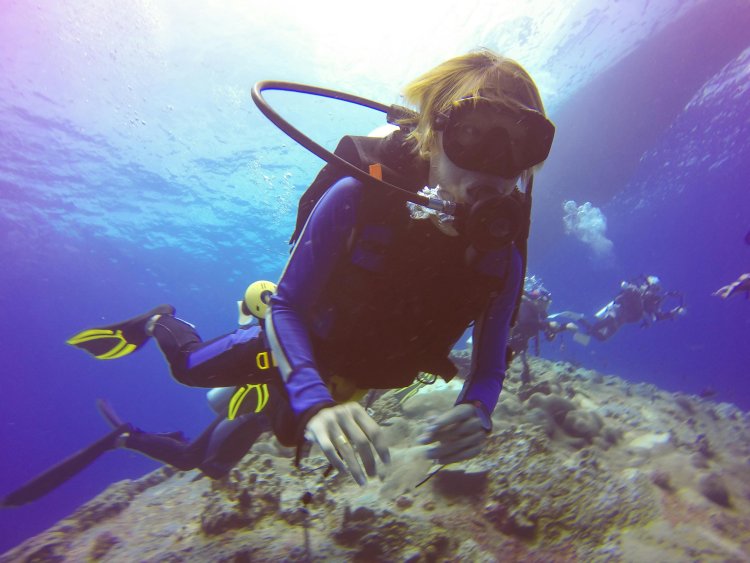The Essential Role of Underwater Welder Helmets: Design, Features, and Innovations

Underwater welding is a highly specialized and challenging field that requires advanced equipment and safety measures. Among the essential tools for underwater welders, the welding helmet stands out as a critical component, providing protection and functionality in demanding environments. This article delves into the design, features, and innovations of underwater welder helmets, highlighting their importance in ensuring safety and efficiency in underwater welding operations.
Importance of Underwater Welder Helmets
Underwater welder helmets are vital for several reasons:
-
Protection: The primary function of an underwater welding helmet is to protect the welder from potential hazards such as electric shock, intense light, and harmful UV radiation emitted during the welding process. Additionally, the helmet provides physical protection from underwater debris and marine life.
-
Visibility: Clear and unobstructed visibility is crucial for precise welding. Underwater welder helmets are designed to offer enhanced visibility, allowing welders to see their work clearly despite the challenging underwater environment.
-
Communication: Modern underwater welding helmets often incorporate communication systems, enabling welders to stay in contact with surface support teams. This communication is essential for coordinating operations and ensuring safety.
-
Comfort and Fit: A well-designed underwater welding helmet provides a comfortable fit, allowing welders to work for extended periods without discomfort. This comfort is crucial for maintaining focus and productivity.
Design and Features of Underwater Welder Helmets
The design of underwater welder helmets is tailored to meet the specific needs and challenges of underwater welding. Key features include:
-
Material and Construction: Underwater welding helmets are typically made from durable and lightweight materials such as high-impact plastics and composite materials. These materials offer protection while ensuring the helmet is not too heavy for the welder to wear for long periods.
-
Viewing Window: The viewing window, or lens, is a critical component of the helmet. It is designed to protect the welder's eyes from intense light and UV radiation while providing clear visibility. Modern helmets often feature auto-darkening lenses that adjust to the light intensity, ensuring optimal visibility in varying lighting conditions.
-
Waterproof Seals: To prevent water from entering the helmet, underwater welding helmets are equipped with waterproof seals and gaskets. These seals are designed to withstand the pressure and conditions of the underwater environment.
-
Breathing Apparatus Integration: Many underwater welding helmets are designed to integrate with the welder's breathing apparatus. This integration ensures a secure and comfortable fit while allowing the welder to breathe easily during operations.
-
Communication Systems: Advanced underwater welding helmets often include built-in communication systems. These systems typically consist of microphones and speakers, allowing welders to communicate with surface teams and other divers.
-
Lighting: Some underwater welding helmets come with built-in lighting systems to improve visibility in dark or murky waters. These lights are usually mounted around the viewing window to illuminate the welding area.
Innovations in Underwater Welder Helmets
Technological advancements have led to significant innovations in the design and functionality of underwater welder helmets:
-
Auto-Darkening Lenses: Auto-darkening lenses have revolutionized underwater welding helmets by automatically adjusting the lens shade based on the light intensity from the welding arc. This feature enhances visibility and reduces the need for manual adjustments, improving efficiency and safety.
-
Enhanced Communication Systems: Modern helmets incorporate advanced communication technology, including noise-canceling microphones and high-fidelity speakers. These systems provide clearer communication between welders and surface teams, reducing misunderstandings and enhancing safety.
-
Integrated Cameras: Some advanced underwater welding helmets feature integrated cameras that provide a live video feed of the welding process. This innovation allows surface teams to monitor the welder's work in real time, offering guidance and ensuring quality control.
-
Heads-Up Displays (HUDs): Emerging technology is introducing heads-up displays in underwater welding helmets. HUDs provide welders with real-time information, such as depth, air supply status, and welding parameters, directly within their line of sight.
-
Improved Ergonomics: Advances in ergonomic design have led to helmets that offer better weight distribution, reducing strain on the welder's neck and shoulders. Improved padding and adjustable straps enhance comfort, allowing welders to work for longer periods without fatigue.
-
Enhanced Durability: Innovations in materials science have resulted in helmets that are more resistant to impact, corrosion, and wear. These durable helmets can withstand the harsh conditions of underwater environments, ensuring long-term reliability.
Safety Considerations
Safety is paramount in underwater welding, and helmets play a crucial role in ensuring the welder's well-being. Key safety considerations include:
-
Electrical Safety: Underwater welders face the risk of electric shock due to the conductive nature of water. Helmets must be designed with proper insulation and grounding to protect the welder from electrical hazards.
-
Pressure Management: At greater depths, water pressure increases significantly. Helmets must be able to withstand this pressure without compromising the welder's safety or comfort. Properly designed seals and materials are essential for maintaining pressure integrity.
-
Visibility and Eye Protection: The intense light from the welding arc can cause eye damage. Helmets with high-quality lenses that filter harmful UV and infrared radiation are essential for protecting the welder's eyes.
-
Breathing and Ventilation: Integration with the breathing apparatus ensures that welders have a consistent supply of breathable air. Proper ventilation within the helmet prevents fogging and maintains clear visibility.
-
Emergency Procedures: Helmets should be designed with emergency procedures in mind. Quick-release mechanisms and easy access to communication systems are crucial for ensuring the welder can respond effectively in case of an emergency.
Conclusion
Underwater welding helmets are essential tools that provide protection, visibility, communication, and comfort for underwater welders. The design and features of these helmets are tailored to meet the unique challenges of underwater welding, ensuring the safety and efficiency of operations. Technological advancements continue to drive innovations in underwater welding helmets, enhancing their functionality and reliability. As the field of underwater welding evolves, these helmets will remain a critical component, supporting the skilled professionals who perform this demanding and vital work.














